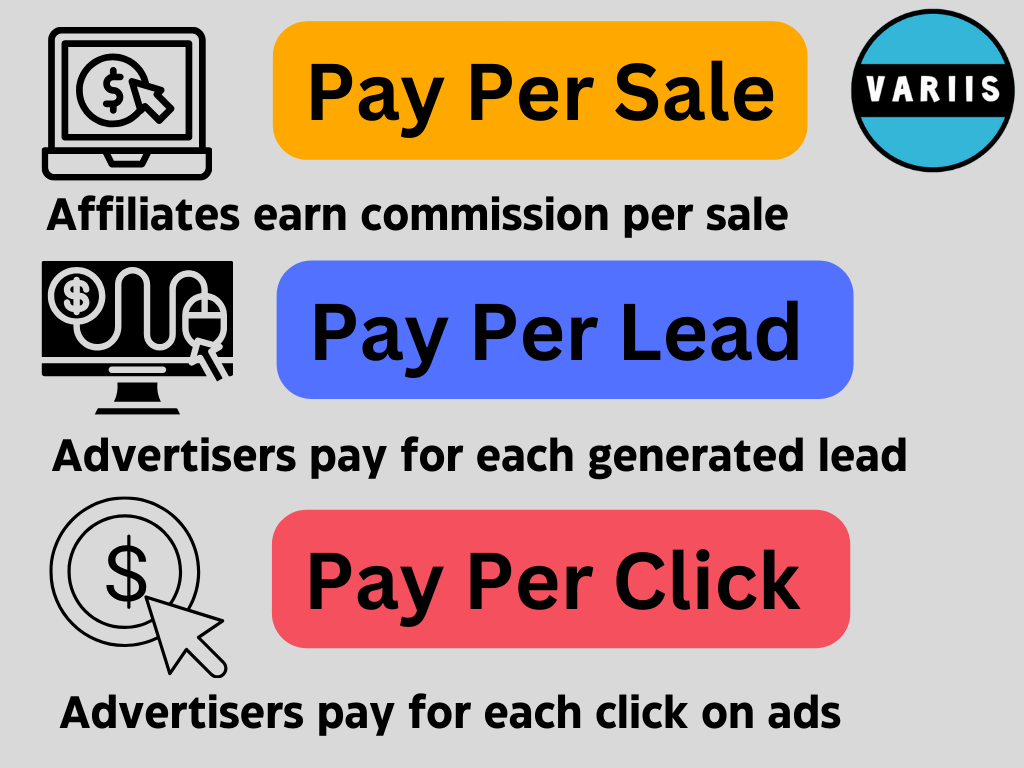Affiliate marketing comes in three forms: Unattached, Linked, and Engaged.
- Unattached Affiliate Marketing: In this basic form, the affiliate has no direct connection to the product or service they’re promoting. They lack expertise or authority regarding the offering and don’t make any claims about its effectiveness. They aren’t required to endorse or advise on the product.
- Linked Affiliate Marketing: Here, the affiliate has some connection to the product or service they’re promoting. They typically have expertise or specialization related to the offering, which lends credibility to their promotion. However, they don’t guarantee the product’s suitability or effectiveness.
- Engaged Affiliate Marketing: This form involves a close relationship between the affiliate and the product or service. The affiliate has either used or is currently using the offering and believes in its benefits. Their personal experiences serve as endorsements, making them a trusted source of information. However, their reputation could be at risk if issues arise with the product or service they recommend.
Affiliate marketing is a collaborative strategy where different parties work together to promote and sell products or services. The three key parties involved are sellers/product designers, affiliates/publishers, and customers. Sellers provide products or services for sale and may also handle marketing efforts. Affiliates promote these products to potential customers and earn a commission for each sale they generate. Customers play a crucial role by making purchases. Affiliates typically target specific audiences and must disclose their relationship with the seller to consumers, as required by the Federal Trade Commission (FTC). This transparency helps consumers make informed decisions about purchases.

Amazon Associates is a major affiliate marketing program run by Amazon. Participants like artists, publishers, and bloggers team up to advertise Amazon’s products on their websites or apps in exchange for a portion of the sales. Amazon imposes strict criteria for sites carrying its ads, requiring original content, adherence to standards, and prohibition of offensive material. Approval involves evaluation and meeting a sales quota, with no chance for reconsideration if declined. Once approved, participants earn commissions on sales, with rates up to 20%, varying by product and program category, and occasional special commissions for specific events.

Etsy, a global online marketplace specializing in unique and antique items, utilizes various methods, including affiliate marketing, to promote its products. Prospective affiliates must apply through the affiliate program website, meeting certain criteria such as being at least 18 years old, owning an active website with a distinct brand identity, and fulfilling other qualifications. Approved affiliates earn a commission based on sales generated through their site’s advertising of Etsy’s products. The commission rate varies depending on the order price. While Etsy allows affiliates to also be sellers on their platform, they cannot earn commissions on their own products without specific approval. Etsy retains the right to terminate agreements at any time and withhold payment for valid reasons.

The Pay-Per-Sale (PPS) model in affiliate marketing rewards affiliates with a commission for each sale made through their unique affiliate link, typically a fixed percentage of the sale value. This model incentivizes affiliates to focus on promoting products that resonate with their audience and have a higher chance of conversion. It benefits merchants by ensuring they only pay for actual sales and motivates affiliates to optimize their marketing efforts for better performance.
The Pay-Per-Lead (PPL) model, also known as cost-per-lead (CPL), involves advertisers paying for each lead generated through a marketing campaign, where a lead refers to contact information from a potential customer showing interest in a product or service. This model is used to grow customer bases and databases of interested individuals. Publishers hosting ads may find this model profitable as advertisers are willing to pay more for qualified leads.
The Pay-Per-Click (PPC) model is an online advertising strategy where advertisers pay for each click on their ads by internet users, particularly popular in search engine advertising. Advertisers bid on ad placements within search engine results relevant to their offerings, paying for clicks that lead users to their website. Successful PPC campaigns require thorough keyword research, well-structured ad groups, and optimized landing pages to encourage conversions.
The Pay Per View (PPV) model, also known as Cost Per View (CPV), is a performance-based affiliate marketing model where affiliates are compensated based on the number of ad views or impressions generated through their promotional efforts. Affiliates receive payment each time their ads are viewed, offering high visibility and exposure to promoted products or services.
Developing a successful affiliate marketing plan starts with identifying a niche, which is a specific target market characterized by common interests or demographics. This niche determines product quality, pricing, and market appeal. Focusing on a niche rather than broad trends or sectors fosters brand awareness, expertise, and authority. When selecting a niche, consider your passion or expertise, assess competition, and analyze market demand to ensure profitability and sustainability. Choose evergreen markets with consistent demand for long-term success.
Before delving into affiliate marketing, it’s vital to find a niche aligned with your interests and expertise. Your niche defines the industry or subject area you’ll focus on. Choosing a niche you’re genuinely passionate about has multiple benefits: it allows authentic content creation and keeps you motivated. Equally important is identifying your target audience within the niche. Understanding their needs and behavior helps tailor marketing efforts effectively. Researching demographics and interests guides content creation and promotional strategies for better outreach.
When exploring affiliate programs, thorough research is crucial to find ones that match your niche and audience. Each program has unique terms, conditions, and commissions, impacting your earnings. Start by looking into reputable affiliate networks like ShareASale, CJ Affiliate, ClickBank, and Amazon Associates. These networks simplify joining multiple programs in your niche. Consider factors like commission rates, cookie duration, product quality, affiliate support, and merchant reputation when selecting programs. Competitive commissions, long cookie durations, high-quality products, strong support, and reputable merchants are key for success.
Affiliate networks are a boon for new affiliate marketers, offering diverse product options from various industries. Acting as trustworthy intermediaries, they ensure secure transactions and timely payments, fostering confidence. With robust tracking systems, affiliates can monitor their performance and refine strategies. Additionally, many networks provide valuable resources and training materials to help beginners grasp concepts and optimize campaigns for success.
Selecting the right affiliate network is crucial for novice marketers. Consider these factors:
- Reputation: Check reviews and success stories to gauge credibility.
- Product Range: Ensure offerings match your audience’s interests.
- Commission Structure: Compare rates, recurring commissions, and incentives.
- Payment Terms: Evaluate frequency and methods to align with financial needs.
To drive organic traffic and attract potential customers, affiliates need effective SEO strategies. Keyword research tools are crucial for identifying relevant keywords. Key tools include Google Keyword Planner, which provides valuable keyword ideas and competition insights. SEMrush offers comprehensive SEO tools for competitor analysis and keyword tracking. Ahrefs provides detailed backlink analysis, keyword research, and content exploration for a strong SEO strategy.
Disclosure in affiliate marketing involves openly informing the audience about affiliate links or sponsored content. Regulatory bodies like the FTC mandate such disclosure to ensure transparency and protect consumers from misleading information. Marketers demonstrate commitment to trust by disclosing affiliate relationships, even when financial interests are involved. The FTC regulates affiliate marketing in the US, emphasizing clear and conspicuous disclosure to inform consumers about potential biases or financial incentives. Adhering to these guidelines is crucial to avoid legal consequences and maintain online integrity. Effective disclosure requires careful consideration of placement, language, and visibility, fostering trust and credibility with audiences. Despite challenges, prioritizing honesty and transparency over financial gains is essential. Continuous adaptation of disclosure techniques ensures ethical practices and compliance in the evolving digital landscape.
Conversion rate, Click-Through Rate (CTR), Average Order Value (AOV), Return on Investment (ROI), Customer Lifetime Value (CLV), Earnings per Click (EPC), and Churn Rate are essential metrics in affiliate marketing. Conversion rate measures the percentage of visitors who complete a desired action. CTR indicates engagement, AOV reflects average spending per transaction, and ROI calculates profitability. CLV predicts long-term customer value, while EPC measures earnings per click. Churn Rate identifies customers who disengage from the business, aiding in retention strategies. These metrics collectively gauge affiliate performance and campaign effectiveness.

